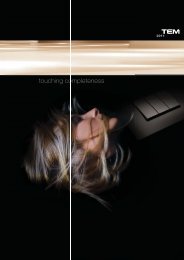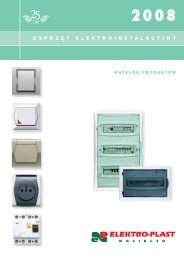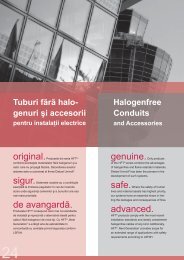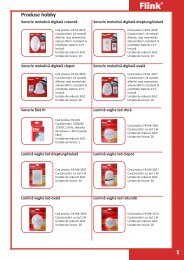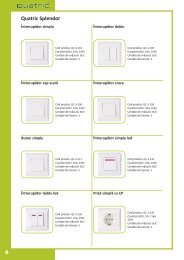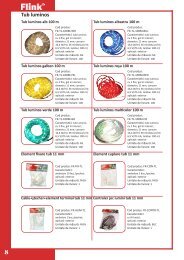Switch-Mode and Uninterruptible Power Supplies, Electronic Fuses ...
Switch-Mode and Uninterruptible Power Supplies, Electronic Fuses ...
Switch-Mode and Uninterruptible Power Supplies, Electronic Fuses ...
You also want an ePaper? Increase the reach of your titles
YUMPU automatically turns print PDFs into web optimized ePapers that Google loves.
Glossary<br />
Glossary/Technical appendix<br />
Hold-up time<br />
(mains-failure bridging time)<br />
The hold-up time (also known as the mains-failure bridging time) is the interval<br />
from the start of the mains outage to the point in time when the output voltage<br />
can no longer be maintained at its original level. The hold-up time indicates how<br />
long a mains outage may last before it influences the output voltage. For DC<br />
power supplies, EN 61204 requires a bridging time of at least 20 ms.<br />
U<br />
U A<br />
hold-up time<br />
<strong>Power</strong> failure<br />
(cutoff)<br />
t<br />
I<br />
Input voltage range<br />
Inrush current<br />
This refers to the minimum <strong>and</strong> maximum input voltage at which the rated<br />
output specifications can be maintained.<br />
The inrush current refers to the peak current that occurs when turning on a<br />
consumer load. <strong>Switch</strong>ed-mode power supplies have storage capacitors in the<br />
input which can cause significant current peaks while the mains power is being<br />
switched on. A variety of circuitry solutions can be used to attenuate these<br />
current peaks. In the simplest solution, an inrush limiter is used. Active switching<br />
can be used in other cases. The peak current specification indicates which<br />
upstream fuse should be used in the circuit. If a fuse is selected which is too<br />
sensitive, it can trigger when the mains power is switched on.<br />
W<br />
1366860000 – 2013<br />
W.9



